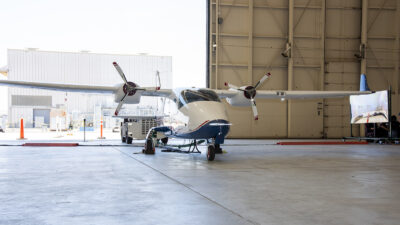Next steps in sustaining human presence in space
By Barbara Imhof, Maria João Durão and Theodore Hall|December 2017
The Space Architecture Technical Committee focuses on the architectural design of the environments where humans will live and work in space, including facilities, habitats and vehicles.
Space agency heads are gearing up toward human exploration beyond Earth orbit. With U.S. funding to operate the International Space Station planned only through fiscal 2024, further goals beckon. The China National Space Agency plans to establish a lunar base within 20 years. Russia and Europe also show high interest in the moon, and NASA may join. Private companies such as Blue Origin and SpaceX have also announced plans for lunar logistics support. Although the definite aims are not yet settled, developments for a sustained human presence on an extraterrestrial body must be prepared years in advance.
NASA awarded the team of Foster + Partners and Branch Technology with first place for completing Phase 2 of the 3D-Printed Habitat Challenge in August. Pennsylvania State University was second. This competition aims to advance construction technology for settling on planetary bodies using in-situ materials. The teams had to demonstrate that with their own printers they could use additive manufacturing processes to print beams, cylinders and other geometric shapes relevant to housing that were then tested for their structural capabilities. José Pinto Duarte of Penn State reported on the last day of the competition:
“Our dome … passed the second strength test, which allowed us to score points and kept us in the race for the first place. In the final strength test, our concrete dome withstood 792 kilograms after just 18 hours of curing! The other team was using thermoplastics, which cured completely 12 hours after being printed. … Their dome was able to withstand a slightly larger load than ours.”
Simulation missions are also continuing in facilities worldwide. In May, the China National Space Agency opened its “lunar palace,” Yuegong-1 again. Two groups of four volunteers will spend 60 days and then 200 days confined in the facility, which houses an intricate life support system, habitation spaces and two greenhouses. In September, HI-SEAS, the Hawaii Space Exploration Analog and Simulation, concluded its fifth experiment to study how isolation and the lack of privacy in a small group may affect the social aspects of future space expeditions. The experiment, which began in January, involved six people. The facility is built high on the flank of the Mauna Loa volcano because the volcanic surface resembles Martian soil.
A sustainable human-tended base will require a place to grow food for the crew. The Ground Demonstration of Plant Cultivation Technologies for Safe Food Production in Space, named EDEN ISS, completed its greenhouse in May and put it through initial tests from June through September before shipping it to Antarctica for a year of trial at the German Neumayer III Station. EDEN ISS incorporates a semiclosed aeroponic greenhouse for growing tomatoes, Swiss chard, strawberries, cucumbers, lettuce, chives and other vegetables. The double-cargo-container-size structure includes an international standard payload rack-size greenhouse experiment in preparation of testing on the International Space Station. Engineers and scientists from 14 countries and the space architecture company LIQUIFER Systems Group have been developing this European Union-funded project.
Private companies are also stepping up with space exploration. Maryland-based Genesis Engineering Solutions’ Single-Person Spacecraft underwent tests in 2017, including neutral buoyancy tests assessing ingress/egress, internal layout, restraints and controllers; an impact test of the polycarbonate dome; and flight simulator assessment of propellant usage. Over 75 percent of the pressurized crew enclosure drawings for SPS were completed this year, and the pressure dome engineering development unit was manufactured. The company also signed a memorandum of understanding with Sierra Nevada Corp. in May for, among other things, contributing to Sierra Nevada’s contract for NASA’s Deep Space Gateway. SPS will provide a full-pressure shirtsleeve environment for its sole occupant to control robotic arms for servicing NASA’s gateway and Mars transit habitats as well as for exploring low-gravity asteroids or moons.



































